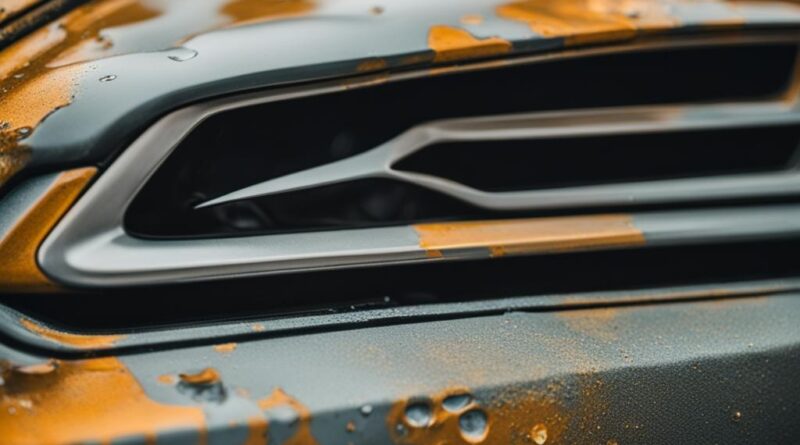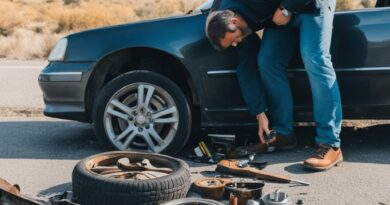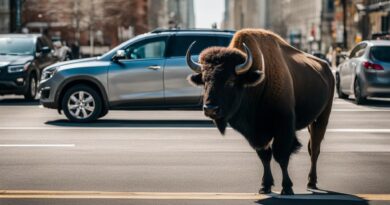Car Paint Bubbling: Causes & Quick Fixes
Car paint bubbling can be a frustrating issue for vehicle owners. It not only affects the appearance of your car but can also lead to more serious problems if left untreated. Understanding the causes of car paint bubbling is essential in finding effective solutions to repair and prevent this issue. In this article, we will explore the various factors that contribute to car paint bubbling and provide quick fixes to address the problem.
Key Takeaways:
- Car paint bubbling can be caused by moisture, debris, high temperatures, excessive humidity, scratches, deteriorating old paint, and hasty clear coat application.
- Contaminated painting surfaces, hot painting surfaces, and excessive moisture can contribute to car paint bubbling.
- Age and wear, solvent pop bubbles, and rust can also cause paint to bubble.
- Fixing car paint bubbling may require refinishing, repainting, sanding, and buffing.
- It is recommended to consult professionals for car paint repair, especially in cases of extensive damage or bubbling on the hood.
Causes of Bubbling in Car Paint
When it comes to car paint bubbling, understanding the causes is essential for effective repair and prevention. Various factors can contribute to the formation of paint bubbles on vehicles. Let’s explore the main causes behind car paint bubbling:
-
Contaminated Painting Surfaces: Painting on a surface that contains debris or moisture can lead to paint bubbling. For a smooth and durable finish, it is important to ensure the painting surface is clean and free from any contaminants before applying paint.
-
Painting on a Hot Surface: Applying paint on a surface that is too hot can cause the paint to dry too quickly and result in poor adhesion. It’s crucial to avoid painting your car in extremely hot weather or under direct sunlight to prevent bubbling.
-
Excessive Moisture: Excessive moisture in the paint or air lines can trap moisture under the paint, leading to the formation of bubbles. Proper moisture control during the painting process is essential to prevent bubbling.
-
Deterioration of Old Paint: Over time, old paint may deteriorate, creating an uneven surface. When a new layer of paint is applied over deteriorating paint, it can lead to bubbling. Proper preparation and restoration of the car’s surface are necessary to prevent this issue.
-
Solvent Pop Bubbles: Hasty application of the clear coat can result in solvent pop bubbles. These bubbles occur when solvents evaporate too quickly, creating small holes. Moisture can enter these holes and cause bubbling in the paint. Proper application techniques and allowing sufficient drying time can help prevent this issue.
These causes result in the formation of tiny air or moisture pockets beneath the paint, which expand and contract with weather changes, leading to paint bubbling. Understanding these causes is crucial for preventing and repairing car paint bubbles.
If you’re curious to see an example of car paint bubbling caused by these factors, take a look at the image below:
Contaminated Painting Surface
A contaminated painting surface, with solid debris or moisture, can cause paint bubbling. It is crucial to have the car’s exterior surface properly cleaned before paint application to prevent the formation of tiny air or moisture pockets beneath the paint. Hiring a professional for paint application is recommended to ensure a clean and smooth painting surface.
Contaminants on the surface can disrupt the adhesion of the paint, leading to bubbling. These contaminants can include dust, dirt, oil, wax residue, or any solid debris that is not properly removed before painting. Moisture, such as rainwater or condensation, can also contribute to the formation of bubbles.
Ensuring a clean painting surface involves a thorough cleaning process that removes all dirt, grease, and wax from the car’s exterior. This can be done with a combination of washing, degreasing, and using a clay bar to remove any embedded contaminants. Professional detailers or auto body shops have the expertise and tools to properly clean the surface and prepare it for paint application.
Proper cleaning and preparation of the car’s surface are essential for preventing paint bubbling. Hiring a professional for paint application can ensure that the surface is thoroughly cleaned and free from contaminants, minimizing the risk of bubbles forming beneath the paint.
| Steps to Prevent Paint Bubbling |
|---|
| 1. Wash the car thoroughly to remove all dirt and contaminants. |
| 2. Use a degreaser to remove any oil or wax residue from the surface. |
| 3. Use a clay bar to remove embedded contaminants. |
| 4. Ensure the surface is completely dry before painting. |
| 5. Consider hiring a professional for paint application to ensure a clean and smooth surface. |
Hot Painting Surface
Painting a surface that is too hot can cause the paint to warp or dry too quickly, resulting in poor adhesion to the car’s surface. To prevent this, it is important to avoid painting your car in extremely hot weather or under direct sunlight. Allowing the surface to cool down before paint application can help prevent bubbling.
When the temperature is high, the paint can evaporate faster, leading to insufficient time for it to properly adhere to the surface. This can result in paint bubbling, where small air pockets form beneath the paint layer.
It is essential to follow proper painting procedures and conditions to ensure a successful paint job and avoid bubbling issues. Here are some tips to prevent bubbling caused by a hot painting surface:
- Choose the right time: Paint your car during cooler parts of the day, such as early morning or late afternoon, when temperatures are lower.
- Find a shaded area: Look for a well-ventilated space, away from direct sunlight, to paint your car.
- Clean the surface: Ensure the car’s surface is free from dirt, dust, and debris, as they can affect the paint’s adhesion and contribute to bubbling.
- Allow proper drying time: After cleaning and preparing the car’s surface, let it cool down completely before applying the paint.
By considering these precautions and working in appropriate conditions, you can minimize the risk of paint bubbling due to a hot painting surface. Following proper painting techniques and using high-quality products can also contribute to a smooth and durable finish.

In the words of automotive paint expert, Mark Johnson: “When it comes to painting a car, temperature matters. The heat can be your worst enemy if not managed properly. Taking the necessary steps to cool down the painting surface is key to preventing paint bubbling.”
Excessive Moisture
One of the causes of car paint bubbling is excessive moisture. When there is too much moisture in the paint mixture or the air lines during the painting process, it can become trapped under the paint, leading to bubbling. This trapped moisture creates pockets of air that expand and contract, causing the paint to bubble and blister.
If the paint is exposed to a lot of moisture while it is still fresh, such as during rainy weather, it can also lead to bubbling. The excess moisture can affect the curing process of the paint, causing it to warp or bubble before fully settling on the car’s exterior.
To prevent excessive moisture from causing bubbling, it is crucial to ensure proper moisture control during the painting process. This includes using moisture traps and filters in the air lines, as well as making sure the paint mixture has the right consistency. By controlling the moisture levels, you can reduce the risk of bubbling and ensure a smooth and flawless paint finish.
Age/Wear
Even with proper care, car paint will naturally deteriorate over time due to age and wear. As the paint weakens, it becomes more prone to bubbling, peeling, and chipping. This process is known as delamination, and it can significantly affect the appearance and integrity of your car’s paint job.
It is important for car owners to be aware of any warranty coverage for the paint on their vehicle. Warranties vary depending on the manufacturer and the specific terms and conditions of the warranty. Some warranties may cover paint bubbling caused by defects in materials or workmanship, while others may have specific exclusions.
If you are experiencing bubbling paint on your car and believe it may be covered under warranty, it is advisable to consult your vehicle’s warranty documentation or reach out to the manufacturer or dealership for further guidance. They will be able to provide information regarding the coverage and potential resolutions for your paint bubbling issues.
However, it’s essential to note that warranty coverage may not be applicable in all cases of paint bubbling. Factors such as the age of the vehicle, maintenance history, and environmental conditions may impact warranty eligibility. Additionally, some warranties may require regular maintenance and inspections to remain valid.
Ultimately, understanding the warranty coverage for your car’s paint can help you make informed decisions regarding repairs or touch-ups. If your warranty does not cover the paint bubbling issue, it is recommended to consult a professional to assess the damage and determine the appropriate course of action.
Solvent Pop Bubbles
When it comes to car paint bubbling, one common cause is solvent pop bubbles. These bubbles occur when the clear coat is applied too hastily, resulting in small holes that allow moisture to enter and cause bubbling. It’s important to address solvent pop bubbles promptly to prevent further damage to your car’s paintwork.
Solvent pop bubbles can appear on various parts of the car, including the roof. If left untreated, they can lead to more significant issues, such as paint peeling or chipping. To fix solvent pop bubbles, it may be necessary to sand and buff the affected area to remove the bubbles and restore the smoothness of the paint surface.

Addressing solvent pop bubbles requires careful attention to detail and skill. It is recommended to seek professional assistance or consult with a car paint repair specialist to ensure the best results. They have the expertise and tools to properly fix the bubbles and restore your car’s paintwork to its original condition.
Fixing Bubbling Paint on Your Car
When faced with bubbling paint on your car, it is essential to determine the specific type of bubbles and assess the extent of the damage before proceeding with a solution. The appropriate fix will depend on the severity of the issue and the affected panels.
If the bubbling is limited to the hood or other panels, refinishing and repainting those areas may be necessary. This process involves removing the damaged paint, preparing the surface, and applying a new coat of paint to restore the car’s appearance.
However, in cases where the car’s paint is very old and deteriorating, a complete refinishing and repainting of the entire vehicle might be required. This comprehensive approach ensures a fresh and uniform finish across the car’s exterior.
Rust and large paint bubbles pose another challenge. These issues can be addressed by sanding and repainting the affected areas to eliminate any corrosion and restore a smooth surface. By properly treating rust spots and addressing large bubbles, you can prevent further damage and enhance the overall aesthetic of your car.
Solvent pop bubbles, which often occur due to hasty application of the clear coat, can be resolved through sanding and buffing. This process helps level the surface and eliminate the appearance of bubbles, resulting in a smooth and glossy finish.
Comparing Solutions for Car Paint Bubbling
| Solution | Applicable Cases |
|---|---|
| Refinishing and Repainting Affected Panels | Bubbling on hood or other panels |
| Complete Refinishing and Repainting | Old and deteriorating paint |
| Sanding and Repainting Rust or Large Paint Bubbles | Rust development or significant bubbles |
| Sanding and Buffing Solvent Pop Bubbles | Hasty clear coat application |
By applying the appropriate solution based on the specific characteristics of the bubbling paint, you can effectively address the issue and restore your car’s paint job to its former glory.
“Properly addressing bubbling paint helps preserve your car’s appearance and value.”
DIY vs Professional Car Paint Repair
When it comes to repairing car paint bubbling on the hood, many vehicle owners may consider taking a do-it-yourself (DIY) approach. While this may seem tempting, it is generally recommended to leave car paint repair to professionals. Employing DIY solutions carries the risk of exacerbating the problem.
Car paint bubbling on the hood can be a complex issue that requires specialized knowledge and expertise to diagnose and fix effectively. Professionals are trained to identify the underlying causes of bubbling and implement appropriate solutions to restore the paint’s integrity.
“DIY solutions carry the risk of making the problem worse.”
Repairing bubbling paint on the hood often involves techniques such as sanding, priming, and applying a new coat of paint. These procedures require precision and understanding of the specific materials and processes involved.
Additionally, professionals have access to specialized tools and equipment that DIY enthusiasts may not possess. This allows them to achieve better results and a more seamless repair.
Consulting a Car Paint Repair Professional
If you are dealing with bubbling on the hood or extensive damage, it is highly recommended to consult a car paint repair professional. They will have the expertise to assess the extent of the damage and provide appropriate solutions tailored to your specific situation.
Car paint repair professionals can also offer valuable advice on preventive measures to mitigate future bubbling. This includes guidance on paint maintenance, protection, and techniques to minimize bubbling risk.
| DIY | Professional |
|---|---|
| Can potentially worsen the problem | Specialized knowledge and expertise |
| Limited access to professional tools and equipment | Utilize specialized tools for better results |
| May not achieve a seamless repair | Proven techniques for a seamless repair |
While DIY projects can be fulfilling, it is advised to prioritize the long-term health and appearance of your car’s paint by seeking professional assistance for car paint repair. Their expertise and resources can ensure a successful repair and help you maintain the value and aesthetic appeal of your vehicle.
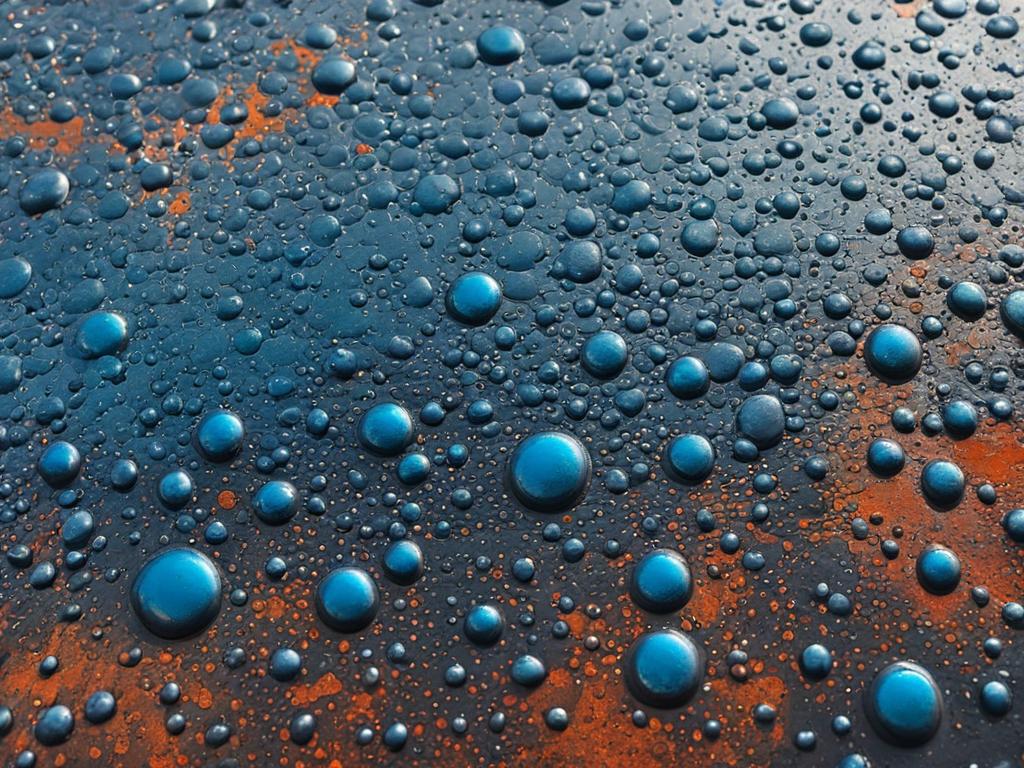
Moisture and Debris in Paint Job
Moisture and debris in the paint job can play a significant role in the formation of bubbles on your car’s surface. When droplets of moisture find their way inside or below the paint during the application process, they become trapped. Over time, as the paint cures and undergoes temperature changes, these trapped pockets of moisture can escape, causing unsightly bubbles to form.
Rainy weather can increase the chances of moisture getting trapped in the paint during application, leading to a higher risk of bubbling. Similarly, if there is debris or other contaminants on the car’s surface before painting, they can create unevenness or pockets where moisture can accumulate, resulting in bubbles.
In order to prevent bubbling due to moisture and debris, it is crucial to ensure a clean and dry painting surface. Thoroughly clean the exterior of your vehicle before painting to remove any dirt, dust, or other debris. Additionally, painting in a controlled environment or protected area can minimize the risk of moisture exposure during the painting process.
Professional painters are well-versed in the techniques to avoid moisture and debris infiltration, ensuring a smooth and bubble-free paint job.
Remember, a high-quality paint job is not just about aesthetics but also about protecting your vehicle’s surface. Taking the necessary precautions to prevent moisture and debris-related bubbling will help maintain the longevity and appearance of your car’s paint.
Rust as a Cause of Bubbling Paint
Corrosion and rust can be underlying causes of car paint bubbling, especially on the roof and hood. When moisture becomes trapped against the car’s surface, beneath the paint, it can lead to the development of rust. Even small areas of exposed metal, such as chips or dents, can provide a pathway for moisture to reach the metal and trigger a chemical reaction, resulting in rust-related bubbling. Bubbling concentrated in one particular area is a possible indication of rust formation.

Note: The image above illustrates car paint bubbling on the roof and hood.
| Causes of Rust-Related Bubbling | Preventive Measures |
|---|---|
| Moisture trapped beneath the paint due to poor surface preparation, such as chips or dents | Regularly inspect and repair any paint damage or chips to prevent moisture penetration |
| Exposure to excessive moisture or rainy weather | Avoid excessive exposure to rain or high humidity levels, and promptly dry the car to prevent moisture build-up |
| Improper storage or parking in areas prone to moisture accumulation, such as near bodies of water | Park the car in covered areas or use a car cover to shield it from moisture |
| Lack of regular maintenance and waxing | Ensure regular washing, waxing, and cleaning of the car to protect the paint and minimize moisture retention |
By addressing the underlying rust issue and taking preventive measures, you can protect your car’s paint and prevent bubbling from reoccurring.
Bubbling from Application Issues
Issues during the paint application process can lead to bubbling, particularly when applying too much paint too soon or standing too close. These mistakes can result in bubbles that resemble pinholes or craters on the car’s surface. Excessive paint application or the presence of solvents or air pockets can contribute to this type of bubbling. To avoid such issues, it is important to use the proper technique, which includes applying the right amount of paint and maintaining an appropriate distance during application.

“Improper paint application can cause bubbling, resulting in a flawed finish.”
When it comes to paint application, precision and care are key to achieving a smooth and flawless finish. Avoiding common mistakes like applying too much paint or standing too close to the car while painting can help prevent bubbling. By following proper technique and taking the necessary precautions, you can minimize the risk of bubbling from application issues.
Preventive Measures
Here are some preventive measures to ensure a successful paint application without any bubbling:
- Prepare the painting surface properly, removing any debris or contaminants
- Use the recommended amount of paint for each coat
- Maintain the appropriate distance while spraying paint
- Apply multiple thin coats rather than a single heavy coat
- Allow sufficient drying time between coats
By following these steps, you can minimize the risk of paint bubbling and achieve a professional-looking finish.
| Common Application Mistakes | Prevention |
|---|---|
| Applying too much paint too soon | Follow the recommended amount of paint for each coat |
| Standing too close to the car while painting | Maintain the appropriate distance while spraying paint |
| Applying a single heavy coat instead of multiple thin coats | Apply multiple thin coats, allowing sufficient drying time between each coat |
Car Paint De-lamination
Over time, repeated sun exposure can cause the clear coat and paint below to break down, resulting in delamination. This condition often starts with small bubbles and progresses to peeling and flaking. The only solution for de-lamination is to strip off the old paint and refinish the surface.
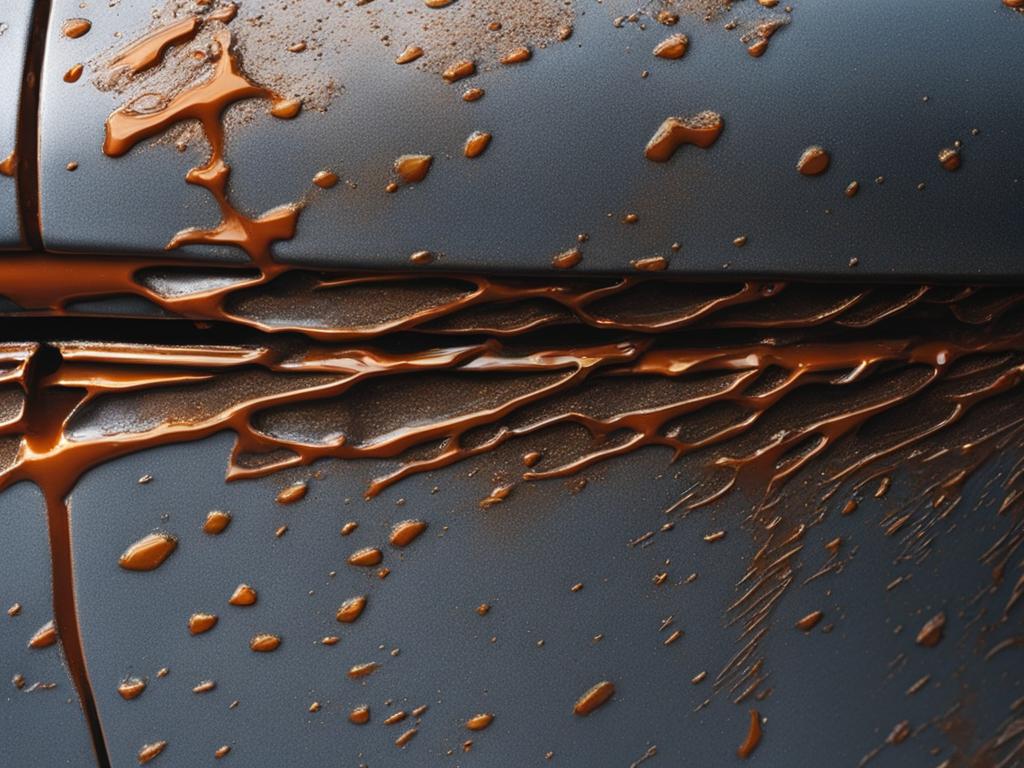
The process of de-lamination occurs when the bond between the clear coat and the underlying layers of paint weakens and separates. This can happen due to prolonged exposure to harsh UV rays from the sun. The heat and radiation cause the clear coat to become brittle and lose its adhesion to the paint layers beneath.
De-lamination is a serious issue that requires professional intervention. It cannot be fixed by simply applying new paint layers over the existing damaged paint. The affected area needs to be properly stripped, prepared, and refinished to restore the paint’s durability and appearance.
If left unrepaired, de-lamination can lead to further damage, including rust formation and a compromised protective barrier against environmental elements. It is essential to address de-lamination as soon as it is noticed to prevent more extensive and costly repairs in the future.
Signs of Car Paint De-lamination
- Small bubbles or blisters forming on the surface of the paint
- Peeling or flaking of the clear coat or paint layers
- Visible separation between the clear coat and underlying paint
- Excessive fading or discoloration
If you notice any of these signs on your vehicle’s paint, it is crucial to consult a professional for an accurate assessment and suitable repair options.
Preventing Car Paint De-lamination
While de-lamination can occur over time, there are preventive measures you can take to prolong the lifespan of your car’s paint:
- Regularly wash and wax your car to protect the paint from UV rays.
- Park your vehicle in shaded areas or use car covers to minimize sun exposure.
- Avoid using abrasive cleaners or materials when washing your car.
- Have your car’s paint professionally inspected and reconditioned as recommended.
- Follow the manufacturer’s guidelines for paint maintenance and care.
By implementing these preventive measures and promptly addressing any signs of de-lamination, you can help maintain the integrity and appearance of your car’s paint for years to come.
| Pros | Cons |
|---|---|
| Restores the paint’s durability and appearance | Requires professional intervention |
| Prevents further damage and rust formation | Can be a costly repair |
| Improves the protective barrier against environmental elements | Must strip off the old paint and refinish the surface |
Prevention and Maintenance Tips
To prevent car paint bubbling, proper maintenance and preventive measures are essential. By following these tips, you can protect your car’s paint and minimize the chances of bubbling.
Maintain Proper Moisture Control
During the painting process, it is crucial to ensure proper moisture control. Excess moisture in the paint or air lines can lead to trapped moisture beneath the paint, causing bubbles. To prevent this, make sure the paint mixture and application equipment are free from excessive moisture.
Avoid Extreme Temperatures and Direct Sunlight
Painting your car in extreme temperatures or under direct sunlight can negatively impact the paint’s adhesion, resulting in bubbling. It is best to choose a mild and dry weather condition for paint application. Additionally, avoid painting during peak sun hours to minimize the risk of bubbling.
Clean and Prepare the Surface
Prior to painting, thoroughly clean and prepare the car’s surface to avoid debris and contaminants. Remove any dirt, dust, or grease that can interfere with the paint’s adhesion. A clean and smooth surface will help prevent the formation of air pockets and moisture beneath the paint.
Regular Maintenance: Wash and Wax
Regular maintenance is key to protecting the paint and preventing bubbling. Wash your car frequently using a mild car shampoo and a soft sponge or mitt. This will help remove dirt, pollutants, and corrosive substances that can damage the paint. Additionally, applying a coat of wax periodically provides an extra layer of protection and helps maintain the paint’s integrity.
Proper maintenance and preventive measures are essential to prevent car paint bubbling. By maintaining moisture control, avoiding extreme temperatures, cleaning the surface thoroughly, and regularly washing and waxing the car, you can protect the paint and prevent bubbling.
Remember, when in doubt or facing significant bubbling issues, it is always recommended to consult a professional for expert advice and solutions.
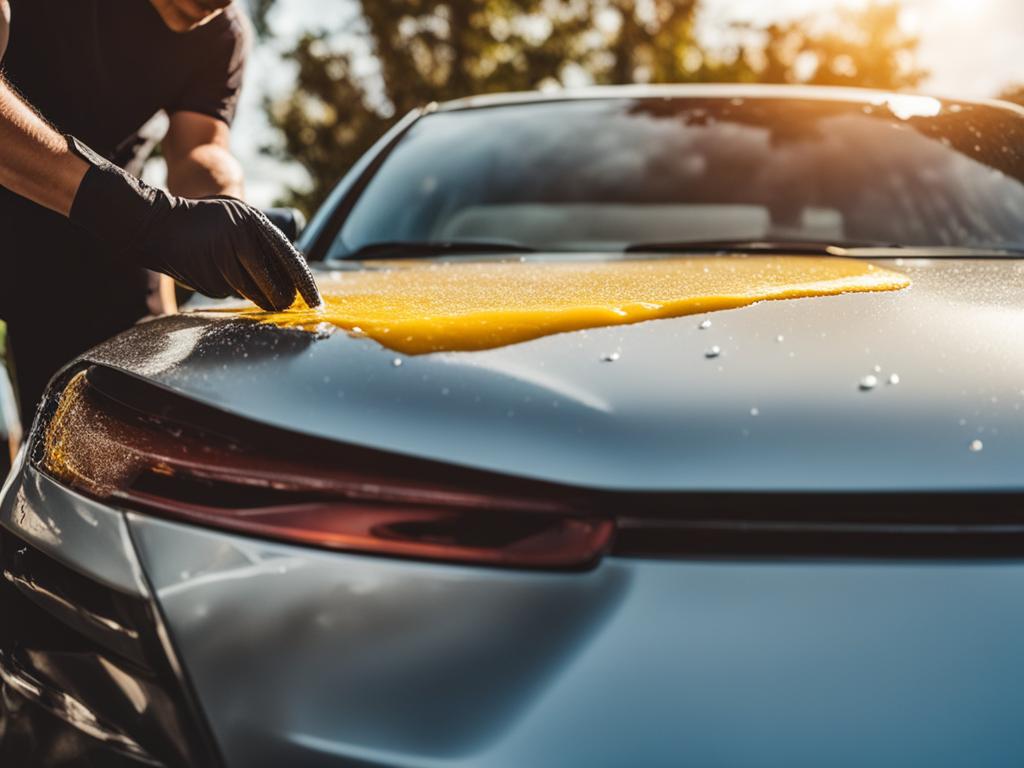
Conclusion
Car paint bubbling can be a frustrating issue for vehicle owners, but understanding the causes and solutions can help prevent and repair the damage. Whether it’s contaminated painting surfaces, hot painting conditions, excessive moisture, age and wear, or solvent pop bubbles, each factor contributes to the formation of bubbles beneath the paint.
While some instances of car paint bubbling can be fixed with DIY solutions, it is often recommended to seek professional assistance to ensure proper repair and minimize the risk of exacerbating the problem. Regular maintenance and care, such as keeping the car clean and free of debris before painting and avoiding extreme temperatures and direct sunlight during application, are essential in preventing paint bubbling.
Preserving the quality of your car’s paint and minimizing the chances of bubbling requires proactive measures. Consult experts in car paint repair and maintenance for professional advice and solutions that can help maintain the appearance and value of your vehicle for years to come. With the right knowledge and care, car paint bubbling can be effectively addressed, ensuring a beautiful and well-maintained exterior.
FAQ
What causes car paint bubbling?
Car paint bubbling can be caused by various factors such as moisture or debris on the painting surface, high temperatures during application, excessive humidity or rain, scratches in the paint, and deteriorating old paint.
How can I prevent car paint bubbling?
To prevent car paint bubbling, it is essential to maintain proper moisture control during the painting process, avoid painting in extreme temperatures or direct sunlight, and keep the car clean and free of debris before painting. Regular maintenance, such as washing and waxing, can also help protect the paint and prevent bubbling.
How can I fix car paint bubbling?
The appropriate solution for fixing car paint bubbling depends on the specific type of bubbles and the extent of the damage. Refinishing and repainting the affected panels are necessary in cases where bubbling is present. Solvent pop bubbles can often be resolved by sanding and buffing. It is generally recommended to leave car paint repair to professionals for more complex issues or extensive damage.

